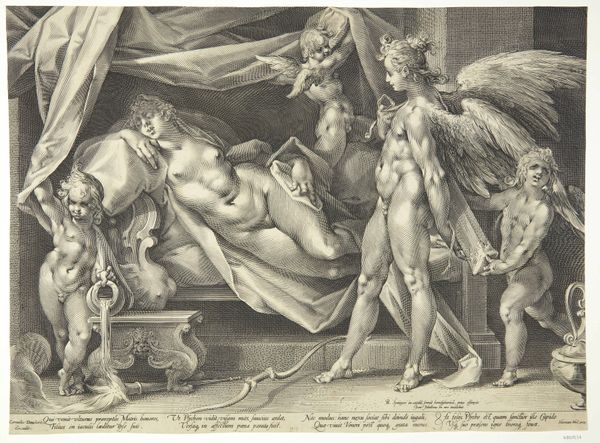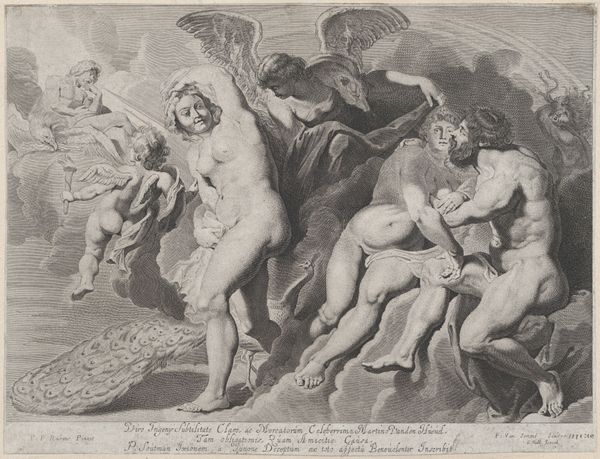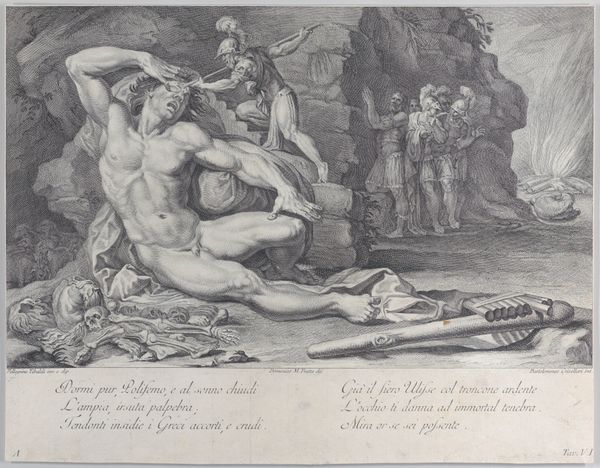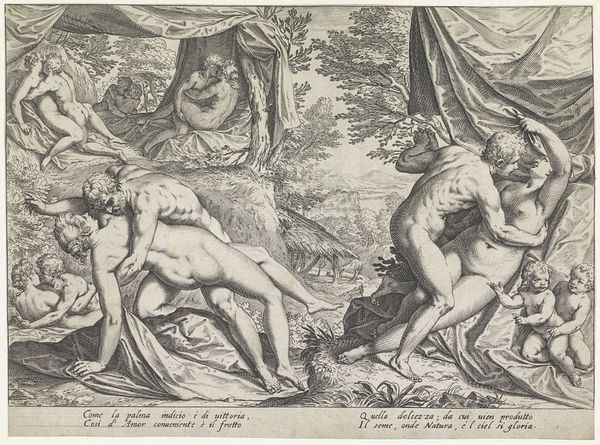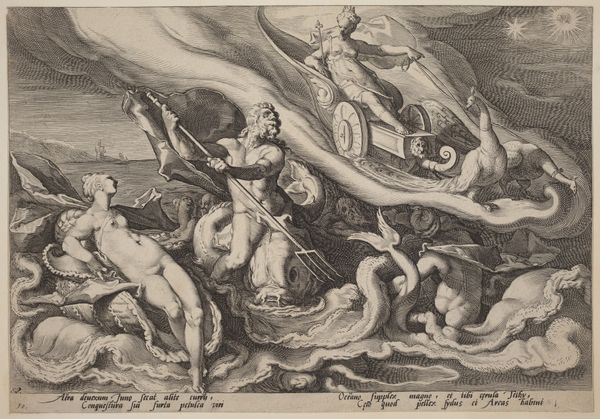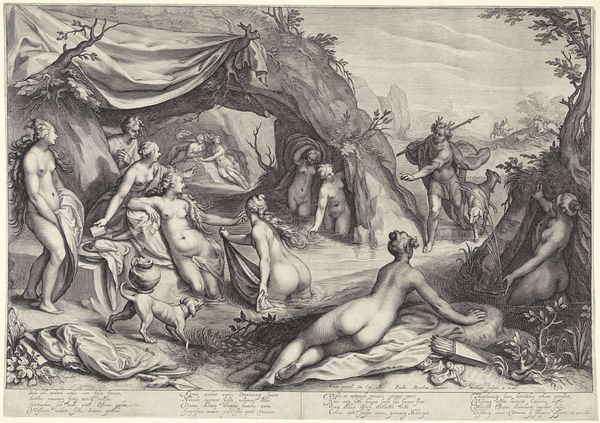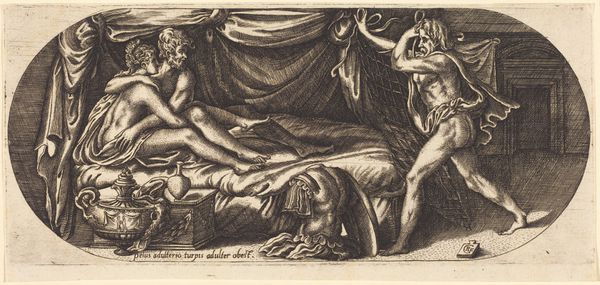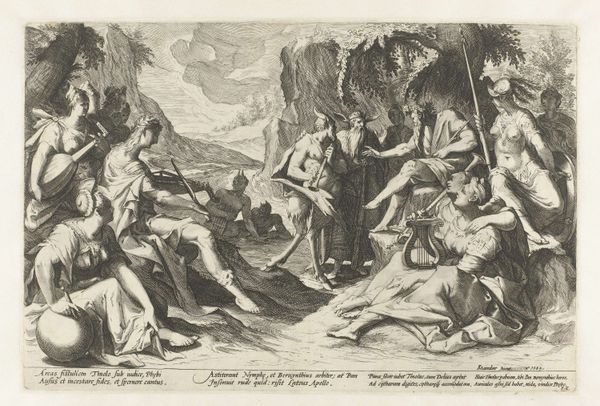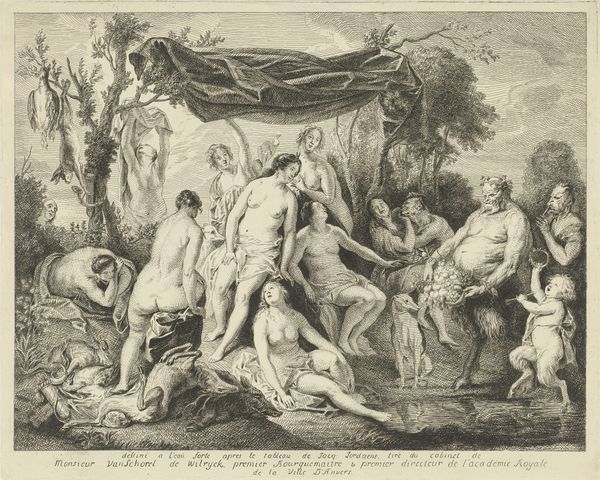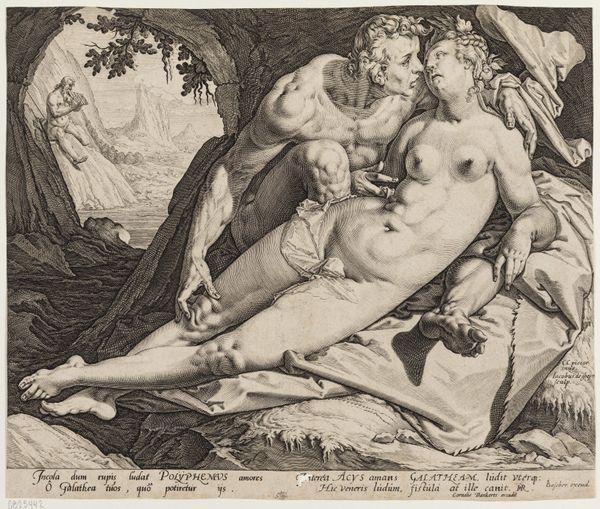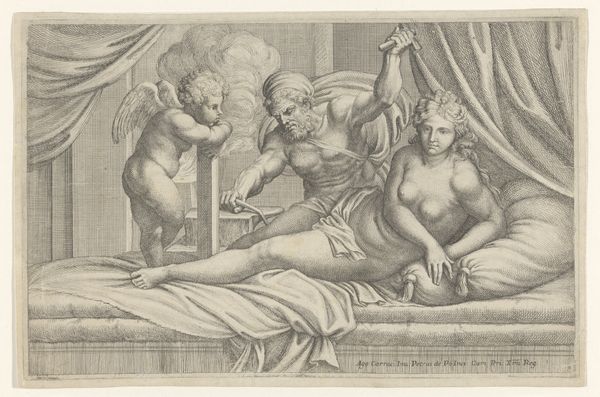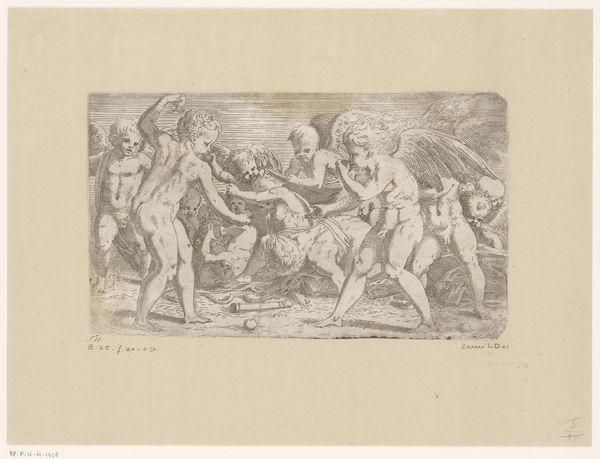
print, engraving
#
pencil drawn
#
allegory
# print
#
mannerism
#
figuration
#
pencil drawing
#
history-painting
#
northern-renaissance
#
nude
#
engraving
Dimensions: plate: 18.5 x 26 cm (7 5/16 x 10 1/4 in.) sheet: 18.7 x 26.4 cm (7 3/8 x 10 3/8 in.)
Copyright: National Gallery of Art: CC0 1.0
Curator: This engraving, made around 1615 by Hendrick Goltzius, is titled "Mars and Venus Surprised." The texture and shading seem incredibly rich for a print. Editor: Indeed. It has a theatrical, almost dreamlike quality. The way the figures are rendered—it's both graceful and unsettling. Curator: Well, that tension is quite Mannerist. You see the gods caught in a very human moment of indiscretion, exposed, almost comical. Think about what's implied through these recurring stories, passed through generations of artworks—the instability of the sacred through everyday action. Editor: Right. And look at the composition—the crowded arrangement, the slightly exaggerated musculature…It evokes a sense of spectacle. Like we’re peering into a private drama staged for public consumption, a very Renaissance sentiment. What power does seeing the drama gives us? Is it part of a larger cultural narrative about control and voyeurism? Curator: Possibly. There's Cupid there at the lower side, a figure symbolic with mischievous power over relationships, or more profoundly, the generative impulse for new unions. With his back towards the viewer, this mirrors how human drives are in effect, hidden, obscure. Editor: Interesting that you draw attention to the obscuring aspect... considering the source material and date. But also that tension works in the rendering—it teeters between detailed naturalism and almost grotesque exaggeration. The way Phoebus casts light into the scene as he stands among the onlooking gods—a rather assertive form of ‘outing’. Curator: It’s quite an intentional artistic commentary, certainly, to consider that such revelations always require witness, always become spectacles of judgement... Goltzius emphasizes these dynamics very precisely, as you’re describing. I read him as making something timeless out of the common cultural threads available for storytellers, but also revealing the psychological complexities for his audience. Editor: Definitely food for thought. I think viewing this, people can come away thinking about art's purpose—both historically, what this engraving achieved within the early modern era, and also contemporarily, as these symbolic interpretations evolve across cultures.
Comments
No comments
Be the first to comment and join the conversation on the ultimate creative platform.

